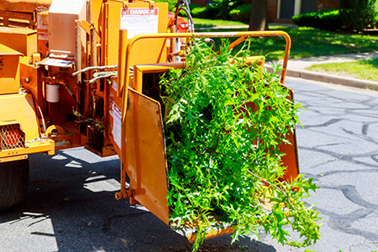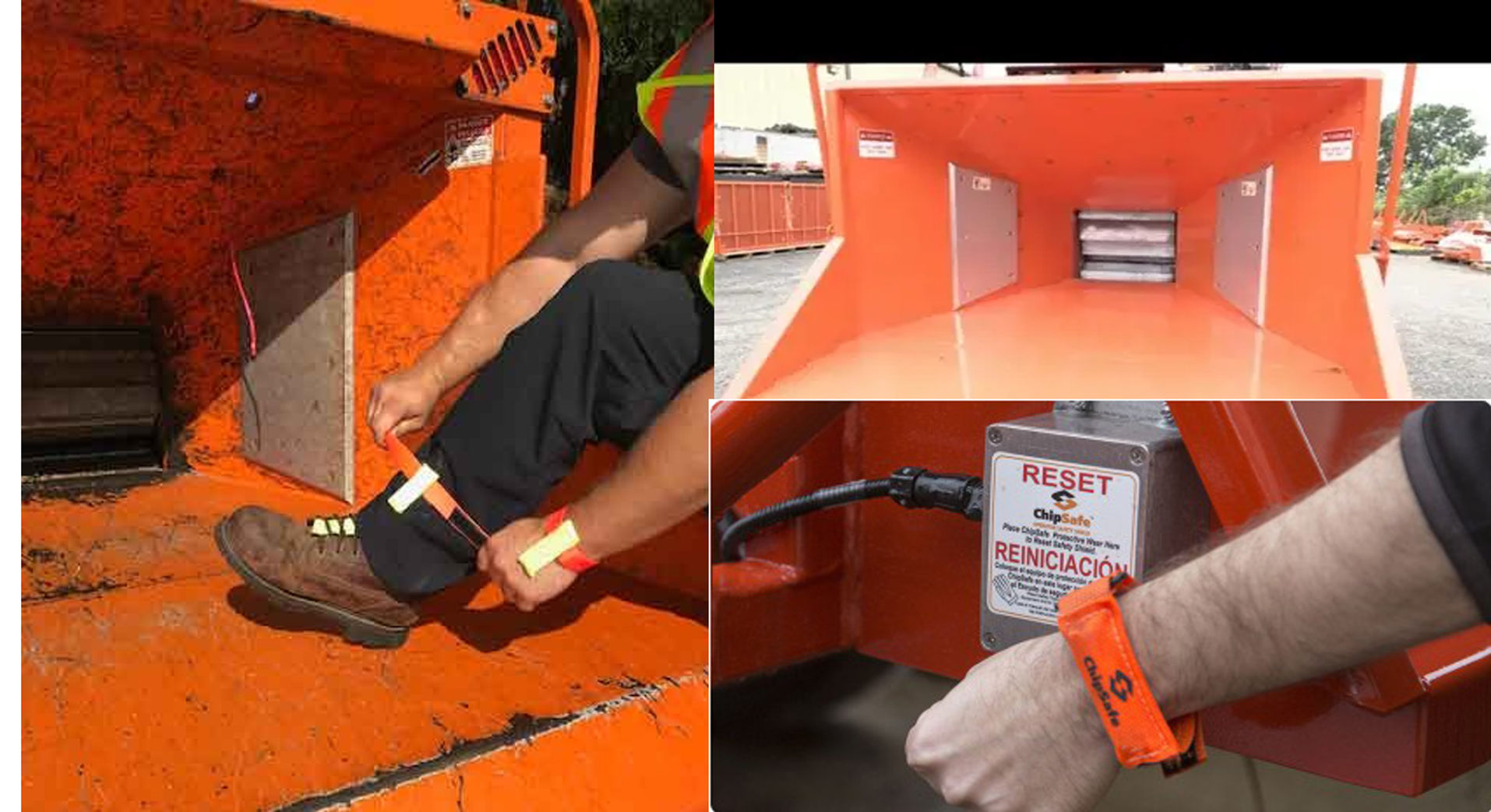Issue 165 - November 2025
RISK SOLUTIONS

Wood Chipper Hazards—California JPIA Provides Funding to Pay for Wood Chipper Safety Shield
Protecting Workers and Preventing Injuries in the Field
Wood chippers are essential tools in landscaping, forestry, and grounds maintenance. While these machines make clearing branches and brush efficient, they can also be extremely hazardous if not operated with caution and respect for safety protocols. Chippers are responsible for serious injuries and deaths resulting from catastrophic amputations and other injuries. These hazards are documented in national injury data: between 1992 and 2002, the Centers for Disease Control and Prevention (CDC) documented 70 occupational fatalities and an estimated 2,042 injuries caused by mobile wood chippers. Between 1996 and 2005, the Occupational Safety and Health Administration (OSHA) documented 29 workplace fatalities caused by wood chippers. And, since 2015, OSHA has recorded at least 19 severe injuries tied to wood chippers, including amputations and head trauma.
The urgency of this issue was reinforced by a recent tragic incident in Menlo Park, California. In October 2022, a 47-year-old worker was fatally injured when he was pulled into a wood chipper. Cal/OSHA’s subsequent investigation resulted in five citations totaling $72,500, citing failures in safety protocol enforcement and equipment safeguards.
Over the years, wood chipper manufacturers have introduced a range of engineering controls designed to enhance operator safety. These include:
- Feed tray extensions
- Rubber curtains in front of the infeed chute
- Feed control bars that stop or reverse feed rollers
- Pressure-sensitive bottom feed stop bars
- Panic bars that stop the hydraulic system that operates the feed rollers
- Emergency pull ropes that allow operators to reverse feed rollers
Despite these improvements, the injury data and Menlo Park case underscore the critical need for enhanced safety measures beyond traditional training and engineering controls.
To protect employees and prevent injuries, the California JPIA is funding the purchase of one Wood Chipper Safety Shield (WCSS) per member (with an approximate value of $5,000–$7,000) on a first-come, first-served basis per fiscal year, until available funds are exhausted. If your agency operates multiple wood chippers, the Authority strongly encourages buying an extra WCSS for each unit. Operating these devices without WCSS safety features is not recommended.

The Authority is partnering with Fullerton-based Wood Chipper Safety Shield LLC for the installations, and each unit includes eight magnetic Velcro bands and safety orientation training, performed on site for Authority members.
The WCSS uses magnetic proximity technology: aluminum sensors in the infeed hopper detect magnets in employees’ wrist and ankle bands, immediately stopping the operation of feed rollers when bands cross the sensors. This technology addresses the primary cause of wood chipper fatalities: operator entanglement in feed mechanisms. The WCSS can be installed on any hydraulic in-feed chipper, new or old.
Understanding Wood Chipper Hazards
Wood chippers pose several risks, including amputations, entanglement, flying debris, hearing damage, and even fatalities. The main hazards stem from:
- Rotating blades: These powerful blades can cause severe cuts or amputations.
- Feeding mechanisms: Workers can be pulled in if clothing, gloves, or body parts get caught.
- Flying chips and debris: High-speed ejection can result in eye injuries or other bodily harm.
- Noise: Prolonged exposure can lead to hearing loss.
- Mechanical failures: Malfunctions may result in unexpected movements or ejections.

Best Safety Practices
- Training and familiarization: Only trained and authorized personnel should operate wood chippers. All operators must understand the manufacturer’s instructions and emergency procedures. Additionally, follow all procedures outlined in the Cal/OSHA Tree Work Safety Guide.
- Safe staffing: Never operate a wood chipper alone.
- Safety gear: Always wear safety glasses or a face shield, hearing protection, gloves, and close-fitting clothing. Avoid loose items or those with hoods and strings that could be snagged.
- Pre-operational checks: Inspect the chipper for mechanical issues before use. Ensure guards and shields are in place.
- Safe feeding techniques: Feed branches into the chipper butt-end first, using long tools or push sticks when possible. Never use your hands or feet to push material.
- Safe distances: Keep bystanders and coworkers at least ten feet away from the machine during operation.
- Proper shut down: Always turn off and disconnect power before clearing jams or performing maintenance.
- Implement safeguards: Install and utilize the WCSS.
Common Mistakes to Avoid
- Wearing jewelry, loose clothing, or long hair untied near the chipper.
- Reaching into the hopper or discharge chute while the machine is running.
- Standing directly in front of the discharge chute, risking impact from flying debris.
- Failing to maintain or inspect the equipment regularly.
- Failure to wear appropriate personal protective equipment.
Wood chippers are valuable but dangerous machines. By understanding the risks, using the proper protective equipment, and following safe operating procedures, workers can greatly reduce the chance of injury. Stay alert, respect the power of the equipment, and prioritize safety every time you work with a wood chipper.
Given the documented frequency of wood chipper injuries, Authority staff recommends prompt participation from members with active wood chipper operations. Early adopters will benefit from priority scheduling for installation.
If you are interested in receiving a WCSS for your agency’s wood chipper, please contact your California JPIA regional risk manager.
< Back to Full Issue Print Article
